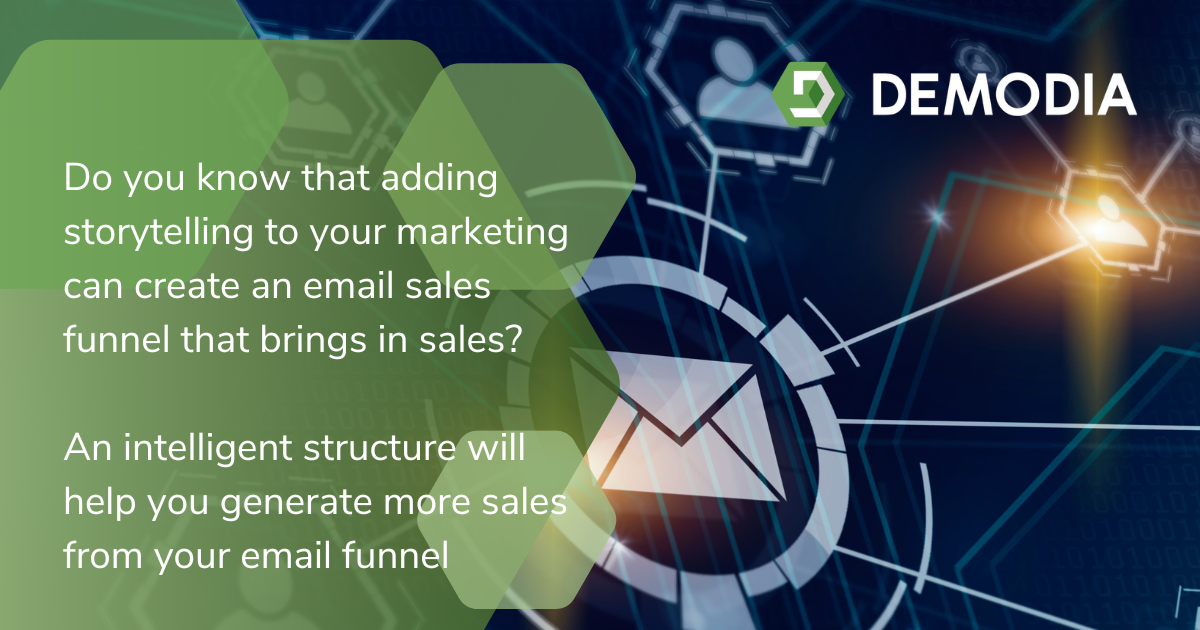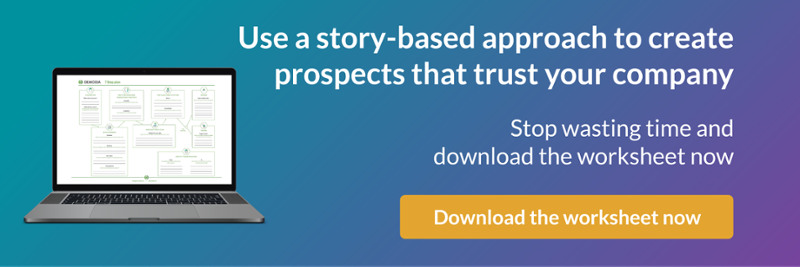Sales emails that actually sell

Sales emails that don't even get opened don't need to exist. At Demodia, we bring storytelling to your marketing and show you how to create an email sales funnel that brings in sales.
For storytelling to work for your product, two factors are crucial in order to turn a prospect into a buyer:
- The hero of your story must be your customer.
- Your product must solve a problem that your customer has.
There are two types of campaigns that we recommend.
- A customer care campaign which is ongoing and aims to keep your customers with you for the long term.
- A sales email campaign, which is initiated to reach out to new contacts and sell to prospects.
To build a successful email sales funnel, there are six topics you need to consider.
First, an email should establish contact and build trust.
1. Offer an interesting asset
This could be a video, a PDF, a webinar or even an exclusive podcast. It is important that the asset addresses your customer's problem. To receive the asset, the customer must provide their email. By offering valuable information about the customer's problem, you build trust. When you give the asset to the customer, tell them briefly and clearly how they should use it. End with a short call-to-action that hints at the possibility of a purchase.
2. Demonstrate authority
The content of the second email should provide authority and demonstrates empathy for the customer's problem.
Explain how your product will solve your customer's challenges. Establish your authority and show empathy for your customer's situation.
3. Build trust
The third email is also designed to build trust. However, not from your perspective, but from the perspective of customers whose problems you have already solved.
Use customer references: Have your clients describe what problem they had, how you helped them find a solution and how your clients' work improved as a result. Customer testimonials are very powerful evidence of your competence.
4. Address your prospects’ concerns and challenges
You enter into your client's inner dialogue by acknowledging that you understand their concerns and giving arguments to overcome them.
Select the biggest difficulty that you can see preventing your prospect from buying. Show understanding of the situation and explain why purchasing your solution is still a good idea.
5. Talk about a paradigm shift
Highlight what the situation was like before your product existed and what changed because of your product. So: In the past, it was like this… but today it is like this… With this approach, you create authority for your product and show the customer how their life will look like after the problem is solved by your solution.
6. Go for the sale
Now is the time to get your offer accepted or rejected. To support this, we recommend limiting the time of your offer or offering bonus products. Limit yourself to offering a single product. Explain again clearly what the customer will get when buying. Reiterate the problem and close the sales funnel with a clear call-to-action.
Depending on the complexity of your offering, you may choose to handle all or several topics in one email, or if you would to communicate over a longer period, then send several emails on one topic. As a rule, the more complex and expensive the product, the longer and more detailed the email sales funnel. We would be happy to advise you on what a successful email sales funnel could look like for you.

